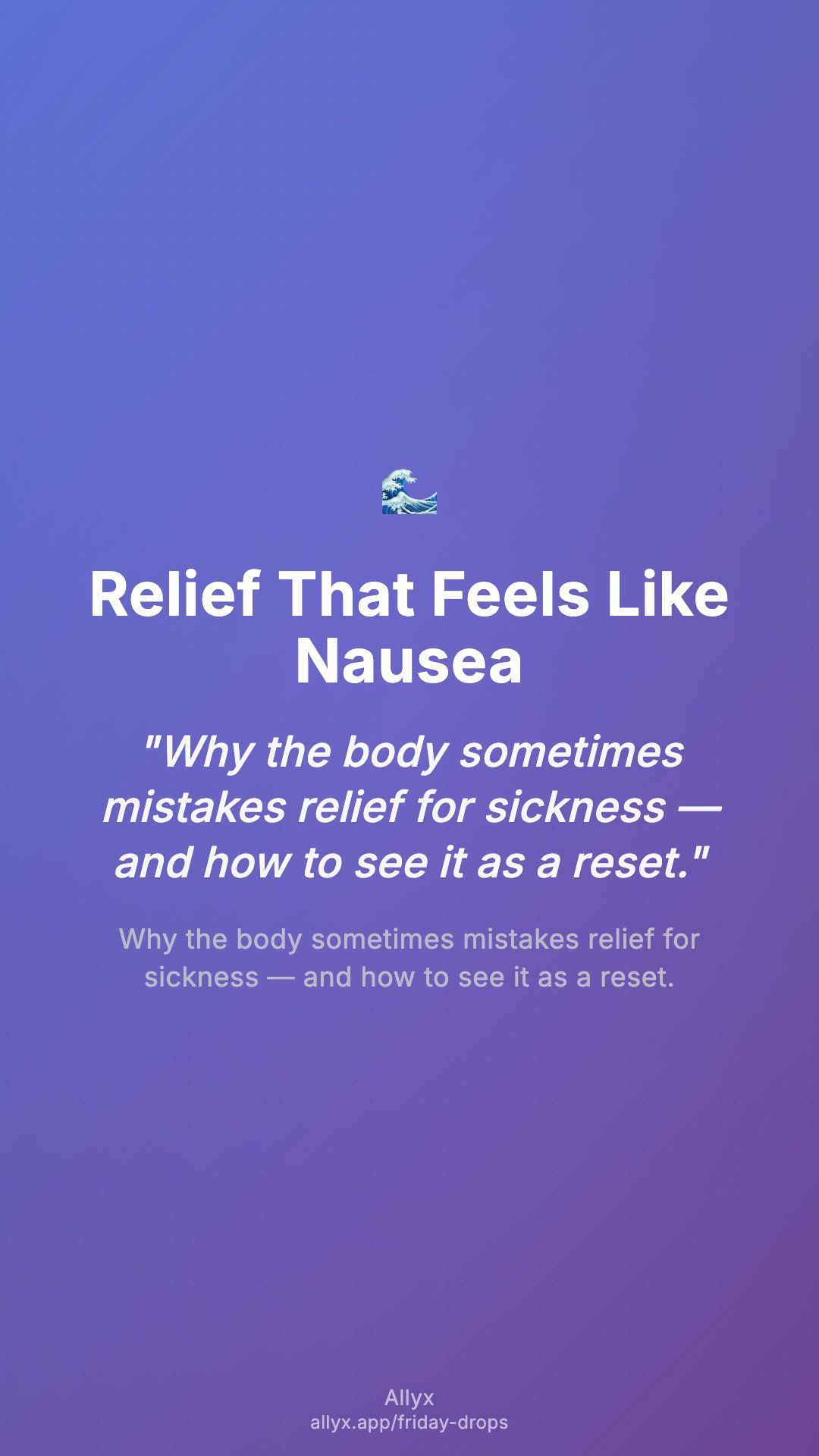Relief That Feels Like Nausea
Why the body sometimes mistakes relief for sickness — and how to see it as a reset.
Tuesday, August 26, 2025
Metaphorical Narrative
Imagine carrying a heavy pack for years, every step weighted down. One day the straps suddenly snap — the pressure falls off your shoulders. For a moment, you stagger, almost sick from the contrast. It feels strange, not like freedom, but like imbalance. Your body doesn’t celebrate immediately; it lurches as if seasick, confused by the sudden absence of weight.
Relief can feel like nausea because the body has learned to associate release with sickness — the same way stepping off a rocking boat leaves you swaying even on solid land.
Core Insight
Relief isn’t always clean joy. Sometimes your nervous system tags it with echoes of past states: crying until you feel lightheaded, stress breaking into exhaustion, serotonin shifts that ripple through the gut. The body remembers these “somatic prints” and replays them each time you release tension.
It’s not illness. It’s rehearsal. A familiar track running in the background: “This is what relief feels like — we’ve been here before.” The trick is seeing it as a reset, not a warning.
Extension: The Swinging Scene
Picture a woman swinging a child by the arms.
- The child is the body’s echo — light, spinning, belly flipping, unsure whether the sensation is joy or sickness.
- The woman is your present self — feet planted, steady, deciding how far and how fast the swing goes.
Relief feels like nausea when you identify only with the child being swung. But when you shift into the woman’s role, you realize: I’m the one holding steady. I can direct this swing. The dizziness is not danger — it’s movement under my control.
Saturday Experiment
Next time relief feels queasy:
- Name It: say out loud, “This is just my body rehearsing relief.”
- Anchor: place one hand on your stomach, one on your chest. Notice the difference between where you feel the churn and where you feel the ease.
- Choose Your Role: ask yourself — am I the child being swung, or the woman holding steady? Shift into the latter.
The aim isn’t to fight the nausea — it’s to recognize it as the flip side of freedom.
Sunday Reflection
Write in third person:
- How does their body usually react when pressure lifts suddenly?
- What “false alarms” has their body attached to moments of release?
- How could they remind themselves that queasy relief is actually proof of progress?
- When did they last step into the role of the woman — the steady one in charge of the swing?

